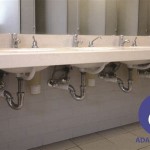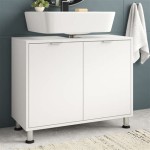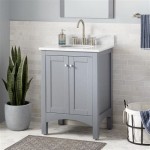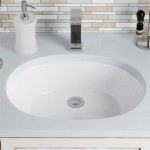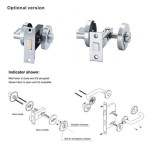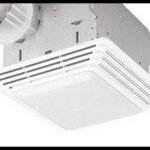Bathroom Portrait Ideas: Elevating Personal Space Through Photography
The bathroom, often relegated to the realm of functionality, can surprisingly serve as a captivating backdrop for portrait photography. Transforming this personal space into a photogenic area involves a thoughtful consideration of lighting, compositional elements, and thematic approaches. This article explores various bathroom portrait ideas, focusing on techniques and creative concepts that can elevate the ordinary into the extraordinary.
Harnessing Natural Light in the Bathroom
Natural light is arguably the most flattering and versatile light source for portraiture. Bathrooms, typically featuring windows, offer an opportunity to leverage this resource. The quality of light varies depending on the time of day, window orientation, and any obstructions outside. Soft, diffused light, characteristic of early morning or late afternoon, tends to be the most forgiving, minimizing harsh shadows and highlighting skin tones evenly.
Positioning the subject strategically in relation to the window is crucial. A subject facing the window generally receives even illumination across the face. However, for a more dramatic effect, a subject positioned at an angle to the window can create a chiaroscuro effect, with one side of the face bathed in light and the other in shadow. Experimentation is key to determining the most flattering angle for the subject and the desired mood of the portrait.
Window coverings, such as sheer curtains or blinds, can further diffuse the light, creating an even softer and more subtle effect. These diffusers help to minimize harsh shadows and create a more ethereal, dreamlike quality in the image. The texture of the window covering can also add a subtle visual element to the portrait.
When natural light is limited, supplementing with artificial light sources becomes necessary. However, it is important to avoid mixing light temperatures. If the natural light is warm, artificial light should also be warm. Conversely, if the natural light is cool, artificial light should also be cool. Inconsistent light temperatures can result in unnatural skin tones and an overall unbalanced image.
Mirrors within the bathroom can also be used to enhance the available light. By strategically positioning a mirror, natural light can be reflected onto the subject, increasing the overall illumination and filling in shadows. However, it is important to be mindful of reflections in the mirror, ensuring that they do not distract from the subject or inadvertently reveal unwanted elements of the bathroom.
Creative Composition and Posing Techniques
Composition is the arrangement of elements within the frame, and it plays a crucial role in guiding the viewer's eye and conveying the intended message of the portrait. Standard compositional guidelines, such as the rule of thirds, leading lines, and symmetry, can be effectively applied in the bathroom setting. The rule of thirds involves dividing the frame into nine equal parts with two horizontal and two vertical lines, placing key elements of the composition along these lines or at their intersections.
Leading lines, such as the edge of a bathtub, the line of a sink, or the pattern of tiles, can be used to draw the viewer's eye towards the subject. Symmetry, whether natural or created through the placement of objects, can create a sense of balance and harmony in the image. However, breaking symmetry can also be an effective technique for creating visual interest and disrupting expectations.
Posing is equally important in conveying the desired mood and personality of the subject. Relaxed and natural poses tend to be the most flattering. Encourage the subject to move and interact with the environment, rather than holding a stiff or forced pose. Simple actions, such as leaning against a sink, looking in the mirror, or running hands through hair, can create a sense of authenticity and spontaneity.
The bathroom's inherent features can inform posing decisions. The bathtub, for example, offers numerous posing opportunities, from sitting on the edge to lounging within it. Reflections in the mirror can be used to create a sense of depth and intrigue, allowing for multiple perspectives of the subject to be captured within a single frame. Consider the height and angle of the camera in relation to the subject to create different visual effects. Shooting from a low angle can make the subject appear taller and more powerful, while shooting from a high angle can create a sense of vulnerability or intimacy.
Details matter in portrait photography. Pay attention to small elements, such as the subject's hands, facial expressions, and posture. Cropping can be used to emphasize certain features or to eliminate distracting elements from the background. Experiment with different crops to see how they affect the overall impact of the image.
Incorporating Bathroom Elements for Thematic Portraits
The bathroom offers a unique set of props and textures that can be incorporated into the portrait to create thematic narratives. These elements can be used to enhance the storytelling aspect of the photograph and to add visual interest to the composition. The presence of bathroom items such as sinks, showers, bathtubs, mirrors, and toiletries can create a sense of context and realism within the portrait.
A thematic approach allows for a deeper exploration of the subject's personality or a specific concept. For example, a portrait featuring the subject interacting with water, such as washing their face or brushing their teeth, can convey a sense of cleansing, renewal, or routine. A bathtub filled with bubbles can create a playful and whimsical atmosphere. A portrait featuring the subject looking in the mirror can explore themes of self-reflection, identity, or beauty.
The color palette of the bathroom can also be leveraged to create a specific mood or aesthetic. A bathroom with cool, neutral tones can create a sense of calm and serenity, while a bathroom with warm, vibrant colors can create a sense of energy and excitement. Complementary colors can be used to create visual contrast and to draw attention to specific elements within the composition.
Accessories, such as towels, robes, and bath products, can add texture and visual interest to the portrait. The texture of a fluffy towel, the drape of a silk robe, or the shimmer of a pearl necklace can all contribute to the overall aesthetic of the image. Consider the use of natural elements, such as plants or flowers, to add a touch of organic beauty to the bathroom setting.
Ultimately, the key to creating compelling bathroom portraits lies in experimentation, creativity, and a willingness to embrace the unique characteristics of the space. By carefully considering lighting, composition, posing, and thematic elements, one can transform the ordinary bathroom into a dynamic and expressive canvas for portrait photography.
:max_bytes(150000):strip_icc()/wall-art-habituallychic.blogspot-56a06cd25f9b58eba4b07306.jpg?strip=all)
8 Ways To Display Art In Bathrooms
:max_bytes(150000):strip_icc()/274633339_5156045171143298_62723232242730938_n-d3cf0ea771734f0080b009b6bafe2a43.jpg?strip=all)
20 Beautiful Bathroom Art Ideas

70 Bathroom Decorating Ideas Pictures Of Budget Decor

Photo Shoot Bathroom Photography Poses Women Insta Ideas Photoshoot

5 Best Small Bathroom Designs Ideas

5 Best Small Bathroom Designs Ideas
:max_bytes(150000):strip_icc()/297644357_728437504918984_5585798303111327776_n-5ad7e544d3cb4f6494960e6cb517bae2.jpg?strip=all)
20 Beautiful Bathroom Art Ideas

Small Bathroom Ideas To Amp Up Designs 20

5 Best Small Bathroom Designs Ideas

Small Bathroom Ideas To Create Beautiful Toilet Designs Livspace
Related Posts
